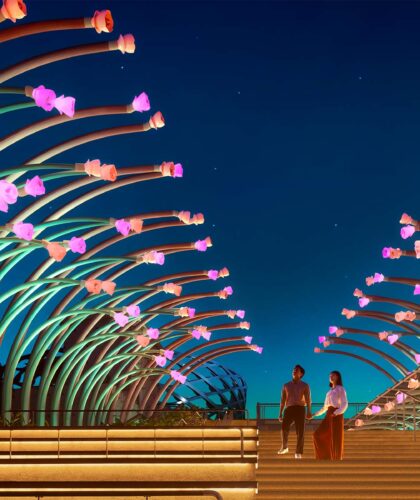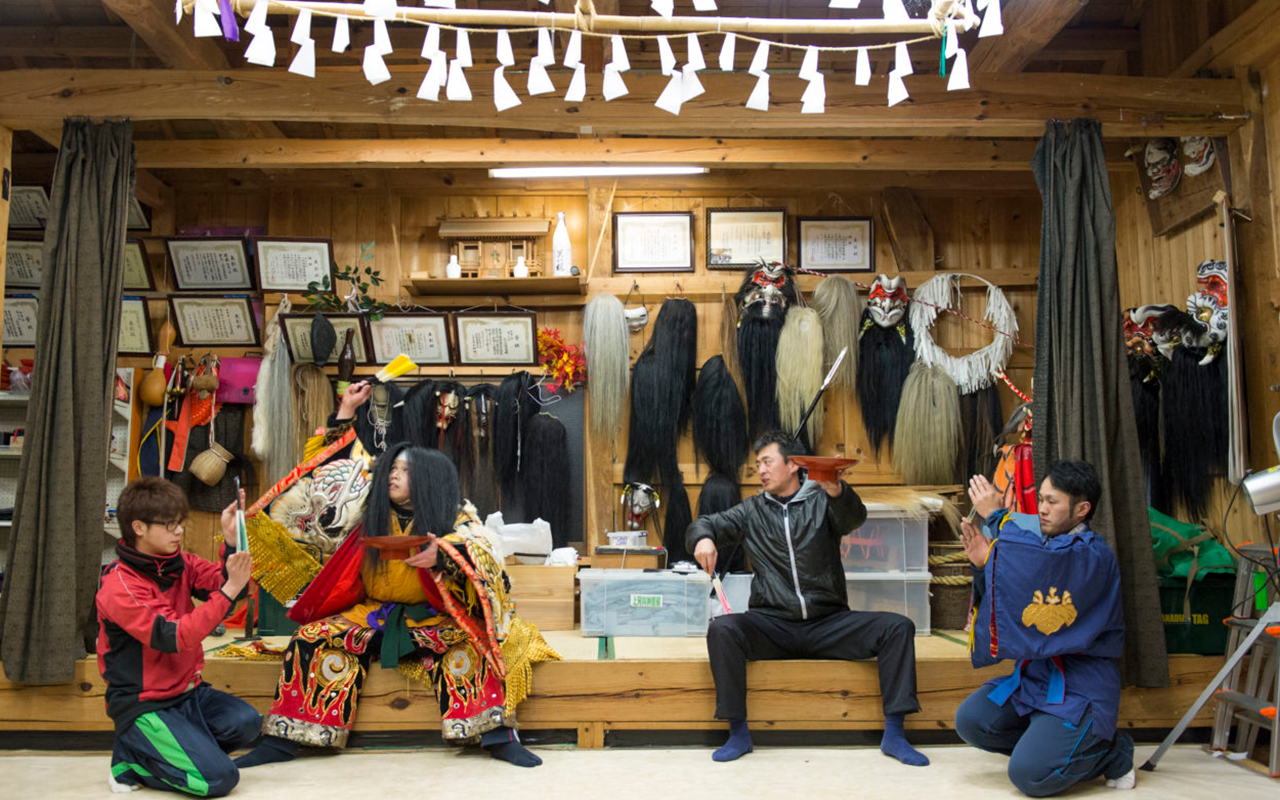
It is a quiet evening in Uegouchi, deep in the mountains of Akitakata, north of Hiroshima. Only the lights of an occasional streetlamp or farmhouse window punctuate the shadowy contours of the land.
But in this hushed darkness, a line of headlights can be seen snaking up the mountainside, heading toward the old Taojiri Hachiman Shrine. Soon the sound of flutes and taiko drums echoes around the valley. For the residents of Uegouchi, this is not unusual – it is time for the Uegouchi Kagura Troupe’s practice.
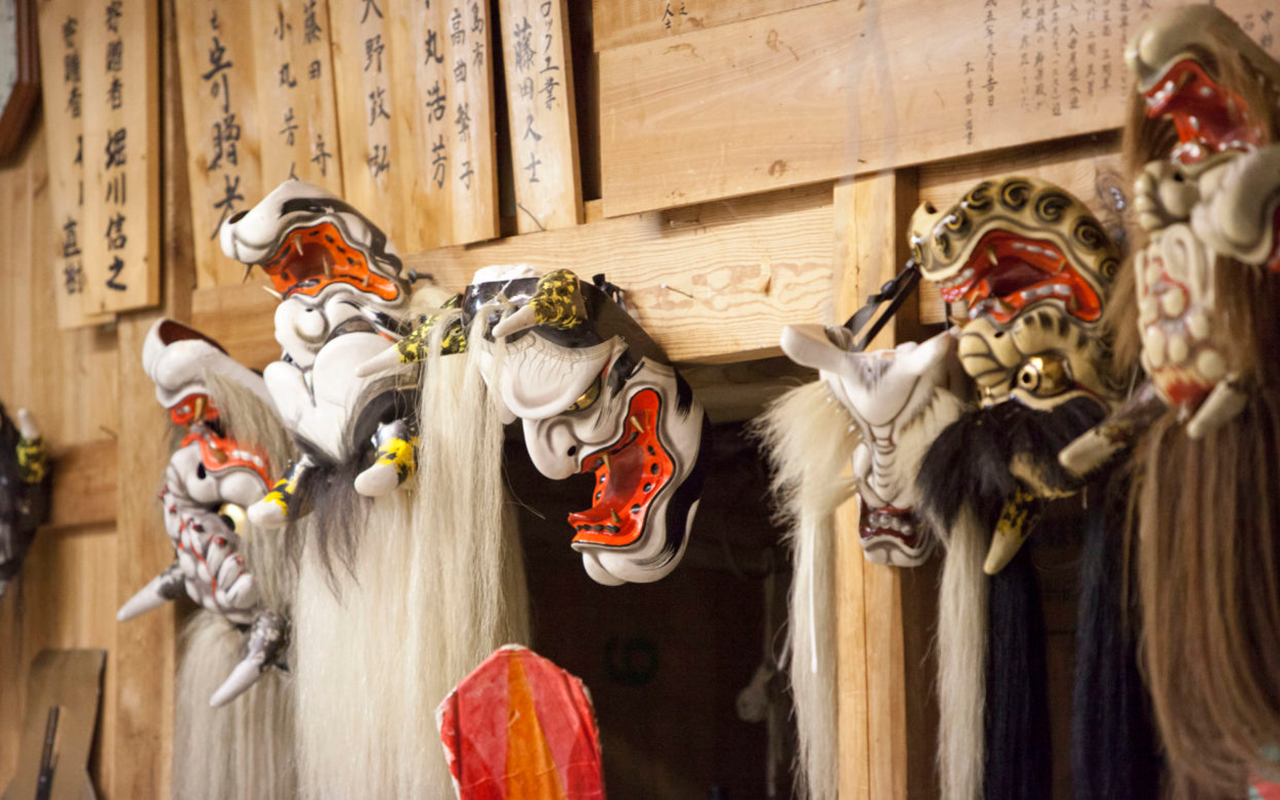
Kagura – a form of traditional dance and theatre found throughout Japan – literally means “god entertainment”. Its origins and practices are entwined with Shintoism, Japan’s native animistic religion, and the performances are often based on tales from the Kojiki, an early eighth-century book that was the first official record of Japanese creation myths and folklore. Typically, in these stories, a central hero defeats an evil foe and saves the day, be it by killing an eight-headed serpent, or fighting off a group of drunken samurai. Acted by performers wearing dazzling gold-embroidered costumes, with special effects, high-tempo rhythms and dramatic outfit changes, kagura is a captivating spectacle.
Traditionally, kagura troupes performed in the autumn months when farming communities celebrated the year’s harvest. Now, thanks to the efforts of the city and regional governments to promote local culture, you can see kagura throughout the year in selected venues across Hiroshima Prefecture, sometimes accompanied by English subtitles and explanations for foreign visitors.
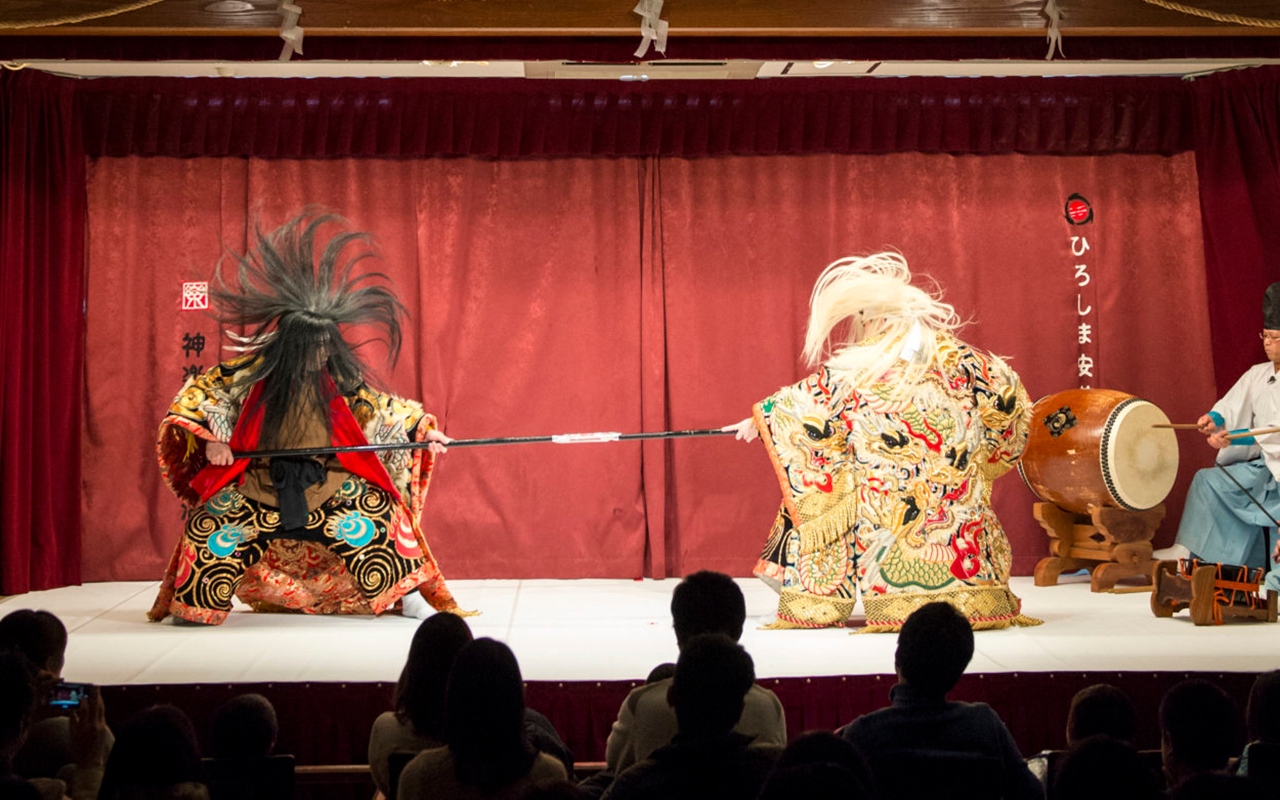
However, the spiritual heartland of kagura is the mountainous region of Akitakata, lying about 60km to the north of Hiroshima City.
While there are some basic dance moves and techniques, each troupe follows its own customs and rhythms, creating an array of distinct performance styles. The natural build of each actor also becomes a consideration, with the performers finding their own style as part of a personal journey. Kagura is an art form in constant transformation.
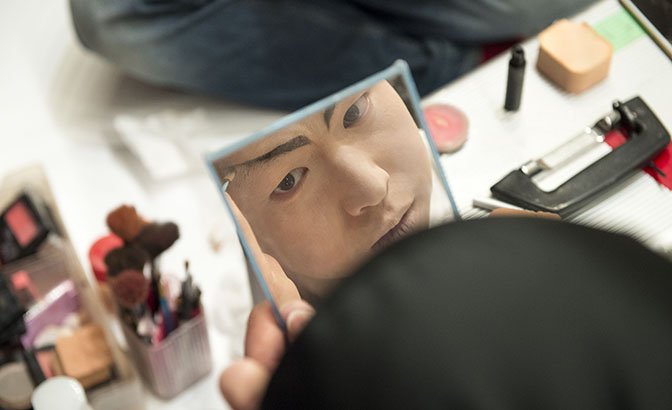
“The style of kagura we practise in Akitakata is Takata-Mai or Shin-Mai, and it’s very high-paced,” explains Kiyohumi Nakamura, the 67-year-old troupe leader. “In kagura, nothing is written down, so each generation has to learn the skills from their elders.”
The Nakamura family has been custodians of the picturesque Taojiri Hachiman Shrine for generations. As long as the shrine has been standing, Nakamura is certain his ancestors have participated in kagura here. He joined the troupe over 30 years ago and is now the group’s undisputed patriarch. During his watch, he has witnessed the troupe and Japanese society change.
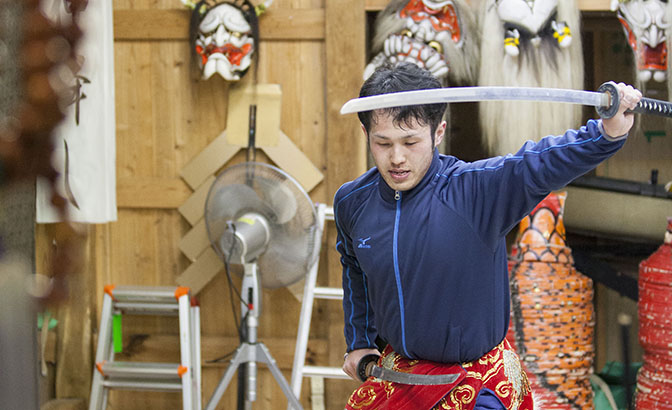
“When I started, the others living in this community were mostly farmers,” says Nakamura. “It was easier for them to dedicate their time to kagura. Today, most people have day jobs, which makes it harder [for them to participate]. Now, there are fewer of us but those that come are very dedicated.”
With the Japanese trend of depopulation especially noticeable in the countryside, Nakamura’s biggest concern is finding enough youngsters to keep the group going. As each kagura troupe follows its own distinct customs and practices, merging different groups would be a tall order. Nakamura says, “Either the troupe survives, or we pack it all in.”
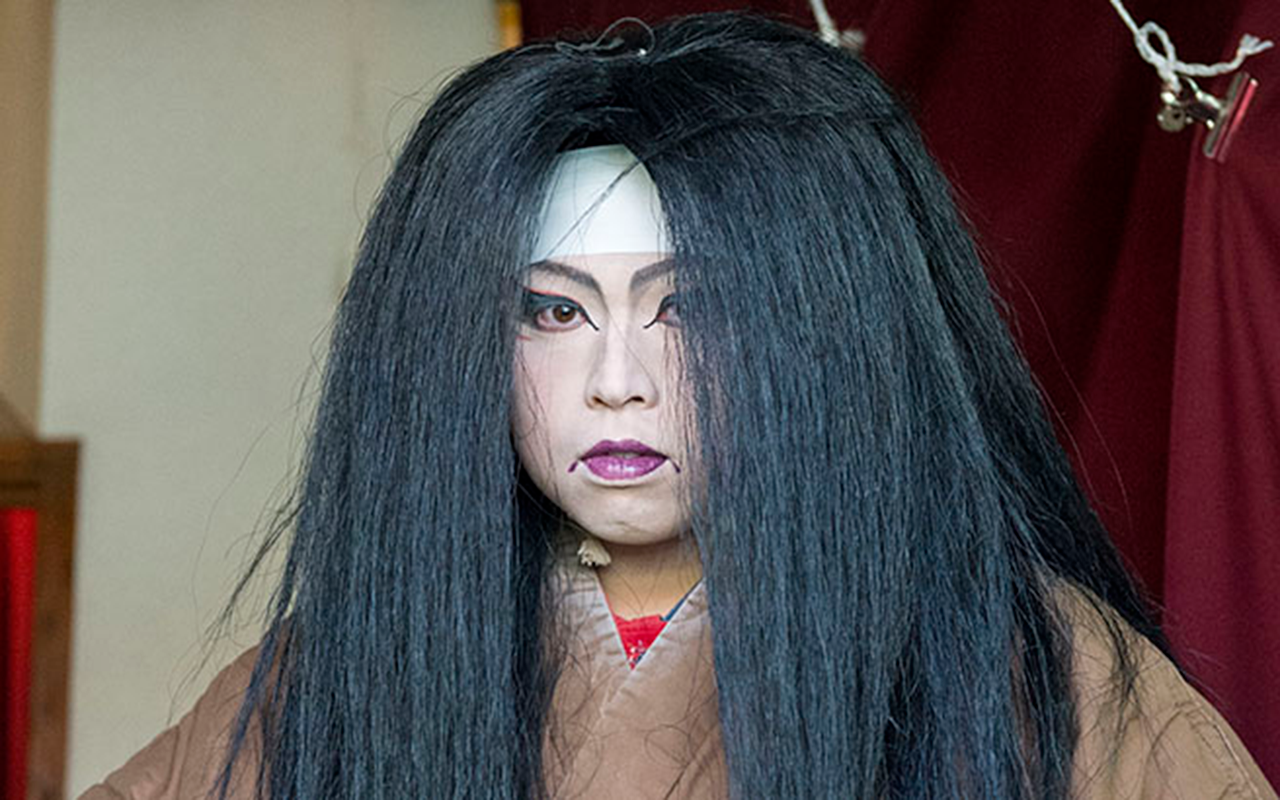
“Now, because there are fewer members, each of us has to be able to take on multiple roles. It’s an interesting time to be involved with kagura. ”
Fortunately, for the time being, the Uegouchi Kagura Troupe boasts a good balance, with a strong core of young actors working tirelessly to learn the art from the more experienced members. One of these kagura devotees is 28-year-old Hiroki Fujita, currently practising for the role of the hero Yamatotakeru.
“Kagura is a part of life; I couldn’t imagine my life without it. Kagura played a big part in my decision to live and work in my hometown of Akitakata,” says Fujita. “As for my role, if this was a company, I guess you could call me middle management! I’m the bridge between the older members and the younger ones.”
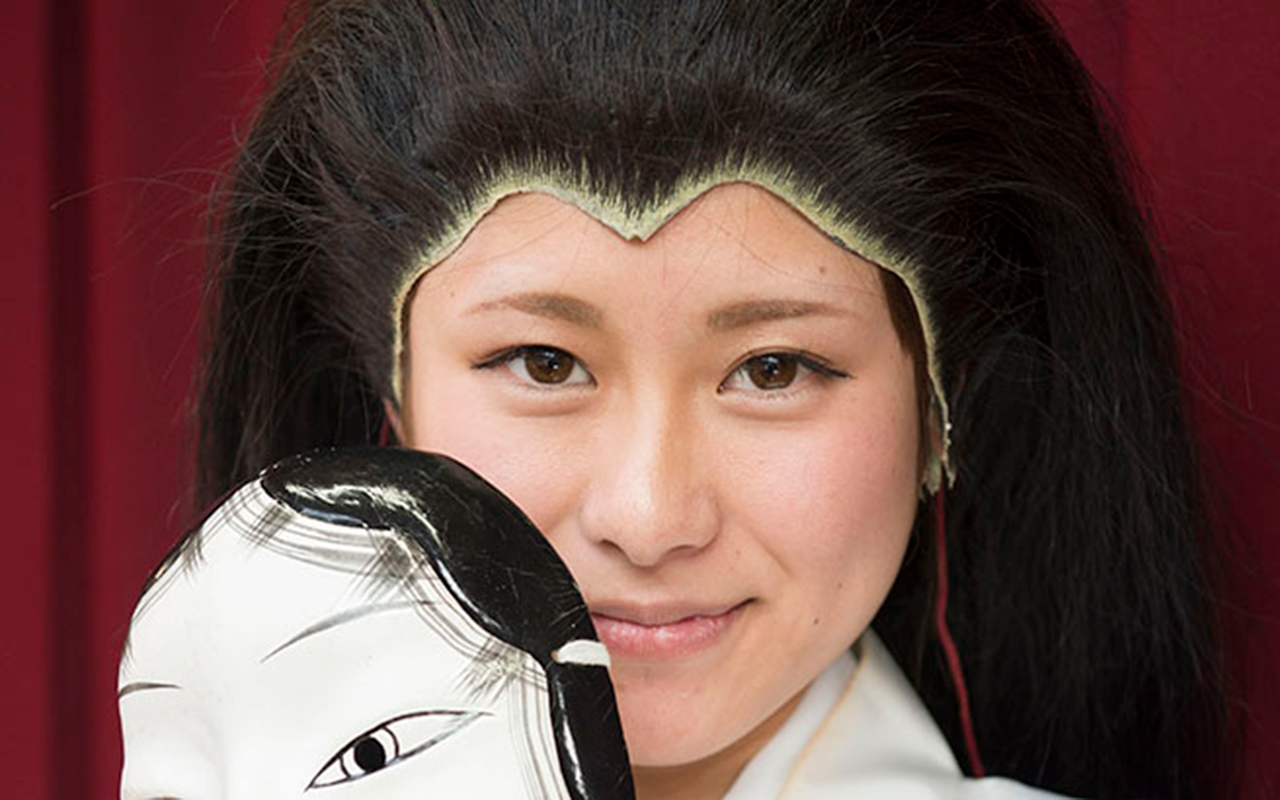
Supermarket checkout staff / Musician & village daughter
“I want to keep going until my final breath. You never feel fully satisfied with the performance because you’re always learning.”
Like Fujita, many of the younger actors started in the children’s troupe before moving into the adult group during high school. Most of their parents were, or still are, involved in the troupe, making the step up feel like a natural progression.
Kagura’s next generation
“We teach the basic skills – dance moves, gestures – but once the actors reach a certain level, we let them figure things out for themselves,” explains Nakamura.
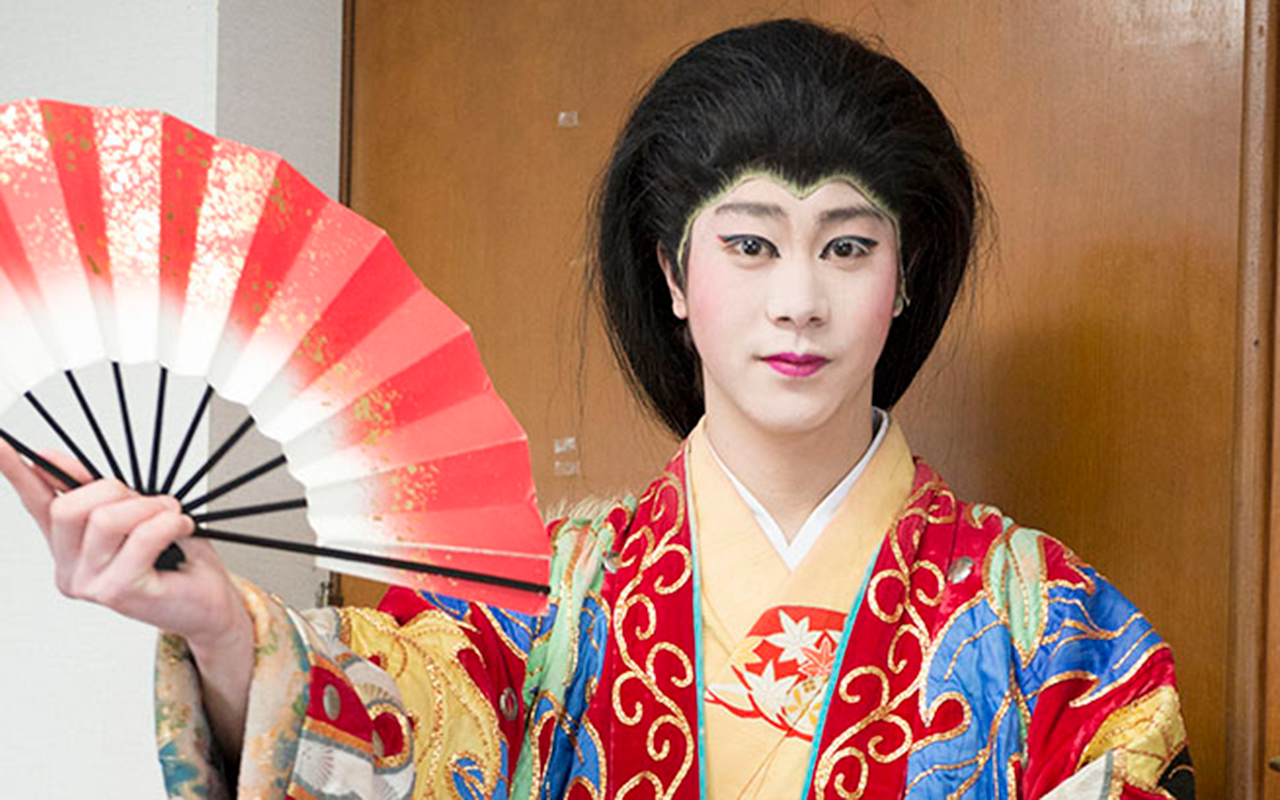
Dry cleaner / Hostess & serpent
“One night, I dreamt I introduced kagura to the world. That’s when I knew this is what I wanted to do. I want to keep the tradition alive.”
In the practice session, Nakamura peers on as the actors walk through their performance, occasionally interrupting them to discuss staging and gestures. The actors are preparing to perform that weekend at the Kagura Monzen Toji Village – a purpose-built facility in Akitakata where 22 troupes from the region take turns to put on a weekly performance.
For the weekend show, 27-year-old Takeru Kono, one of the troupe’s rising stars, is taking on the main role of Susanoo-no-Mikoto in the play Yamatano-Orochi. This is one of the most recognised and most regularly performed plays in the kagura repertoire. In it, the hero, a Shinto god, protects a poor farming family by slaying a drunk, eight-headed serpent .
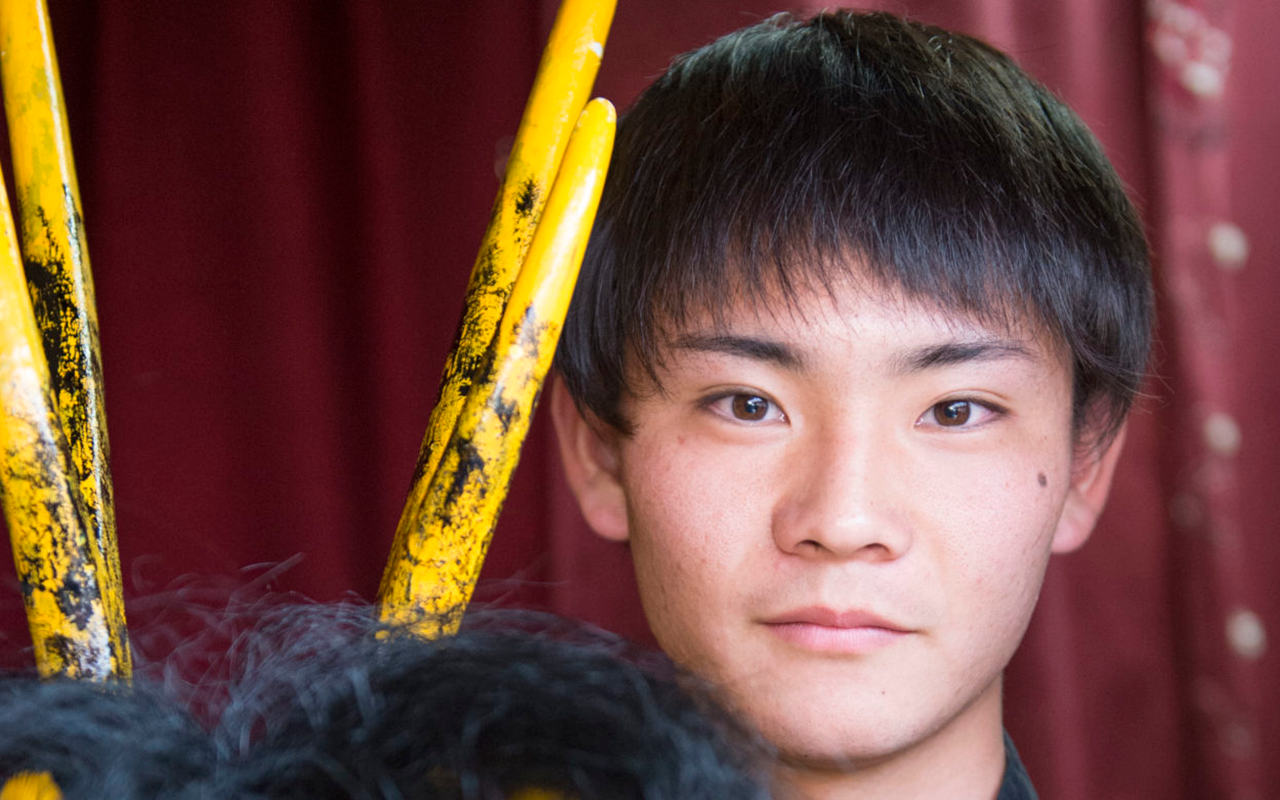
High school student / Serpent
“I always loved kagura and this was my last chance to try it before I leave home. It’s fascinating being part of it all. ”
“At the beginning, going to kagura felt like a natural part of life,” explains Kono, who drives an hour back to his hometown for every practice and performance. “But now, it’s too profound to be just a hobby. It’s as important to me as my work life. While work supports me with an income, kagura supports me through the strong connections in the group. It gives me a reason to come home and reconnect with my community.”
For now, there are enough younger actors to take this troupe forward and continue its traditions. Talking to them, it is clear how seriously they take their role in preserving kagura and protecting the troupe. They see themselves as a link in the chain, a direct connection between the elders and the future generations.
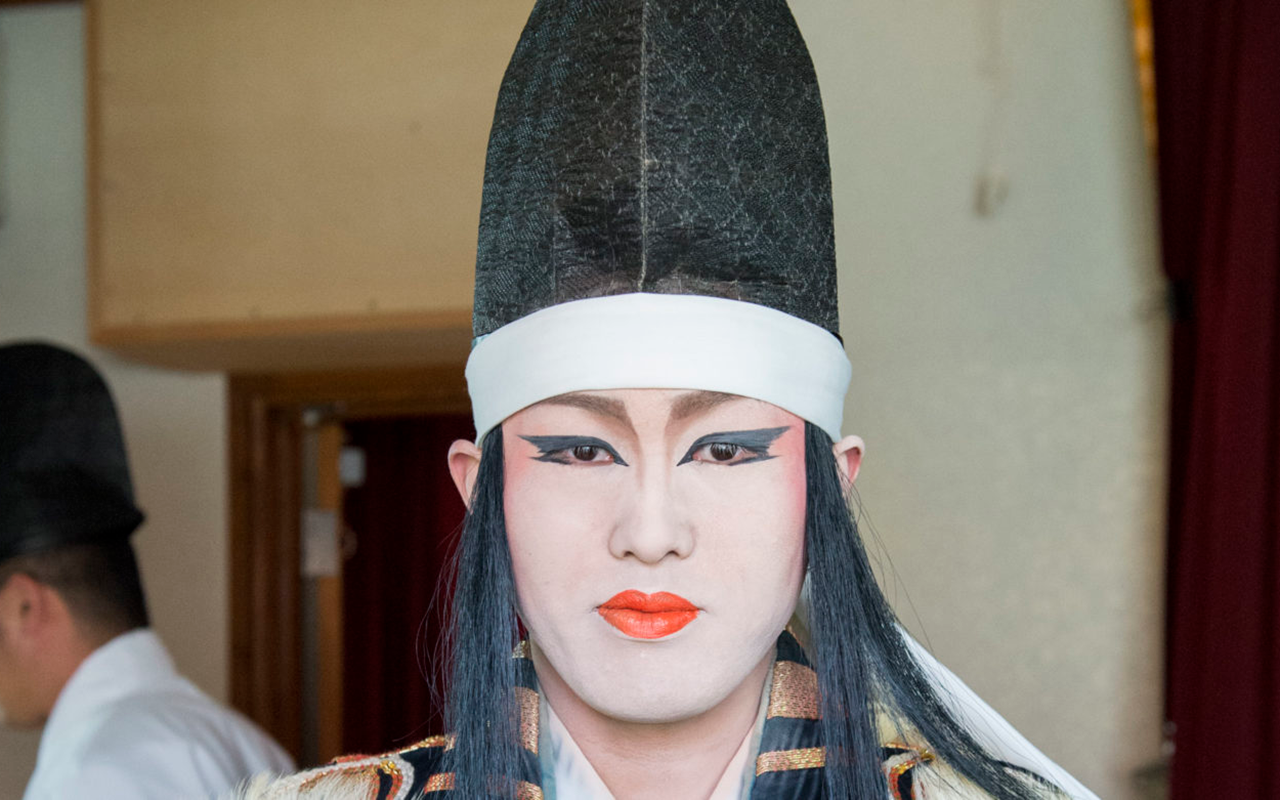
Company worker / Hero & serpent
“Kagura feels like a Japanese martial art. There’s no finish line and the more you practice, the more possibilities open up. ”
“I feel a sense of duty to make sure this art form doesn’t die out,” says supermarket worker Yukina Nakamura, who is just 24. “But saying that, it doesn’t feel like a burden. The troupe is one big family.”
Kagura is still evolving. In the past, plays were performed on a stage in front of the shrine – kagura is meant as entertainment for the shrine gods – but now you can watch it at venues across Hiroshima.
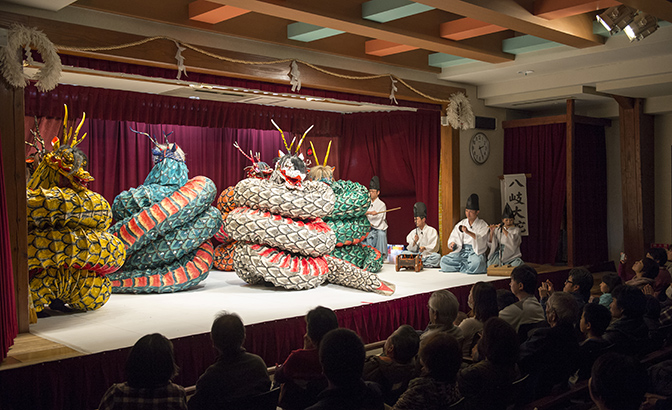
During the performance, the actors go through individual routines, with fans, swords and gourds as dancing props, accompanied by music from drums and flutes. Things get even more exciting when the battle scenes start. Expect lots of spinning and clashing of swords – all taking place at breakneck speed. The most enthralling part of the performance is several lightning-fast costume changes that the actors go through onstage. Performers are no more than a metre away from the front-row audience and sometimes make their entrance from the sides of the auditorium, winding their way past the crowd to the stage, making kagura a truly immersive experience. There’s little separation – physical and emotional – between the performers and the audience.
While it’s undeniable the number of kagura actors in the region has dropped compared to only a few generations ago, the art form is not yet on the ropes. Instead, each kagura troupe feels like a local football club – adored, supported and sustained by a small but loyal circle of members and fans from the local community. Most importantly, as can be seen watching the local children as they try to mimic the moves of their favourite performers, it still has youth firmly on its side.
Where to watch kagura
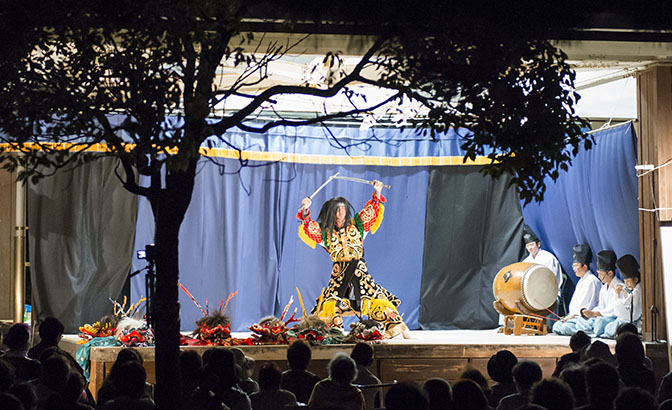
Kagura Monzen Toji Village – Performances are held on Friday, Saturday and Sunday with extra shows on public holidays. This purpose-built facility includes accommodation, shops and a hot spring.
Hiroshima Prefectural Citizen’s Culture Centre – Two performances are held every Wednesday at this central venue. Tickets are sold on the day from 5pm, and doors open at 6pm.
Hiroshima Prefectural Art Museum Auditorium – Performances are held intermittently on Saturday, Sunday and Monday evenings, accompanied by subtitles, an English-speaking presenter and translator. There is also a Q&A with the troupe, a chance to try on costumes and kagura goods for sale.
SEE ALSO: Art on a plate: 5 places to enjoy kaiseki in Tokyo
This article was originally published in the April 2018 issue of Silkwinds magazine



